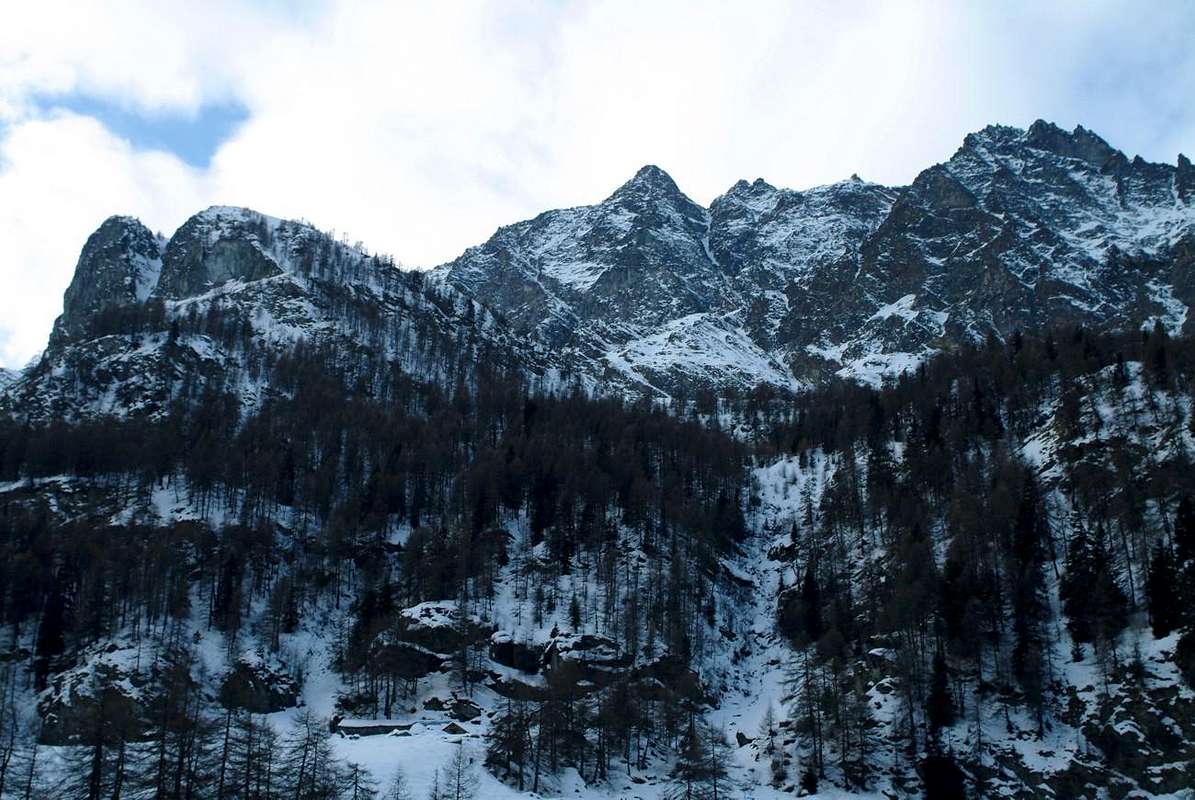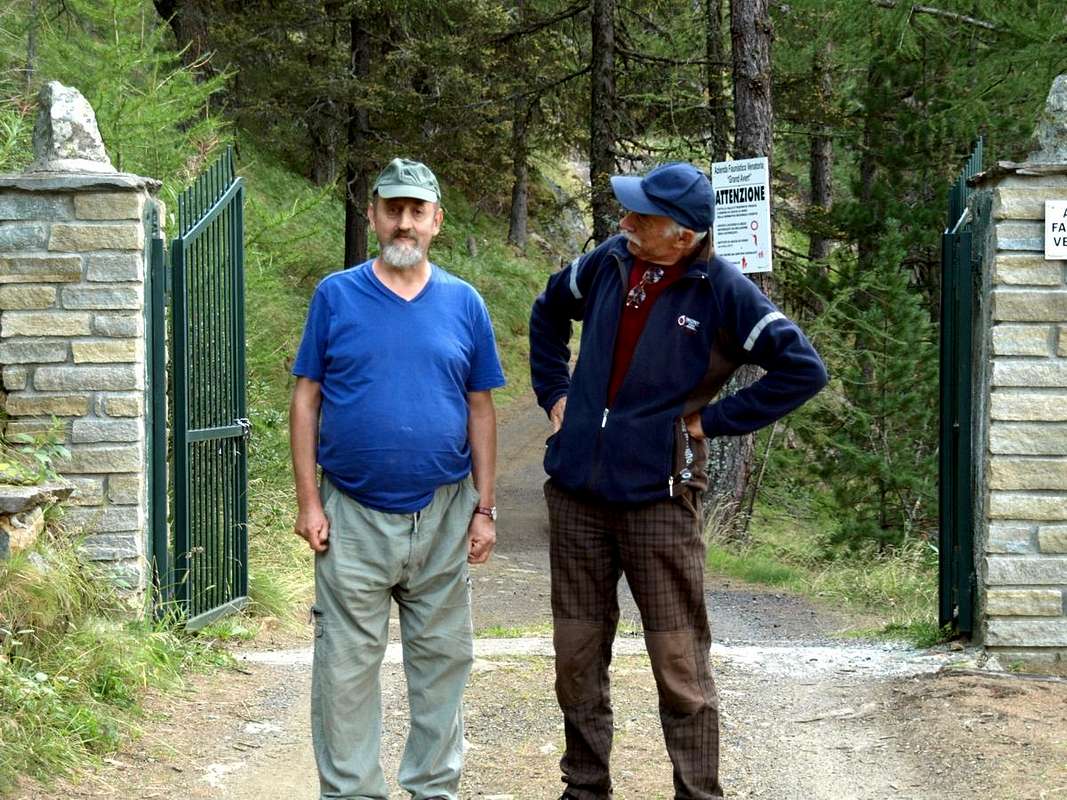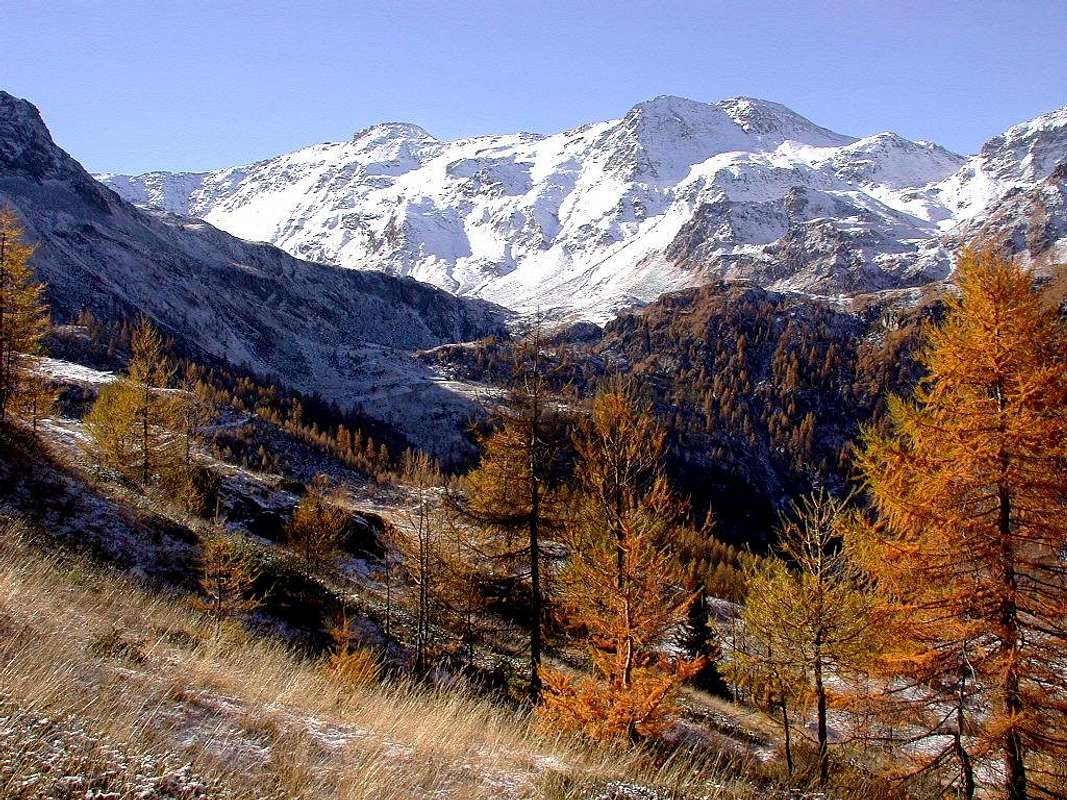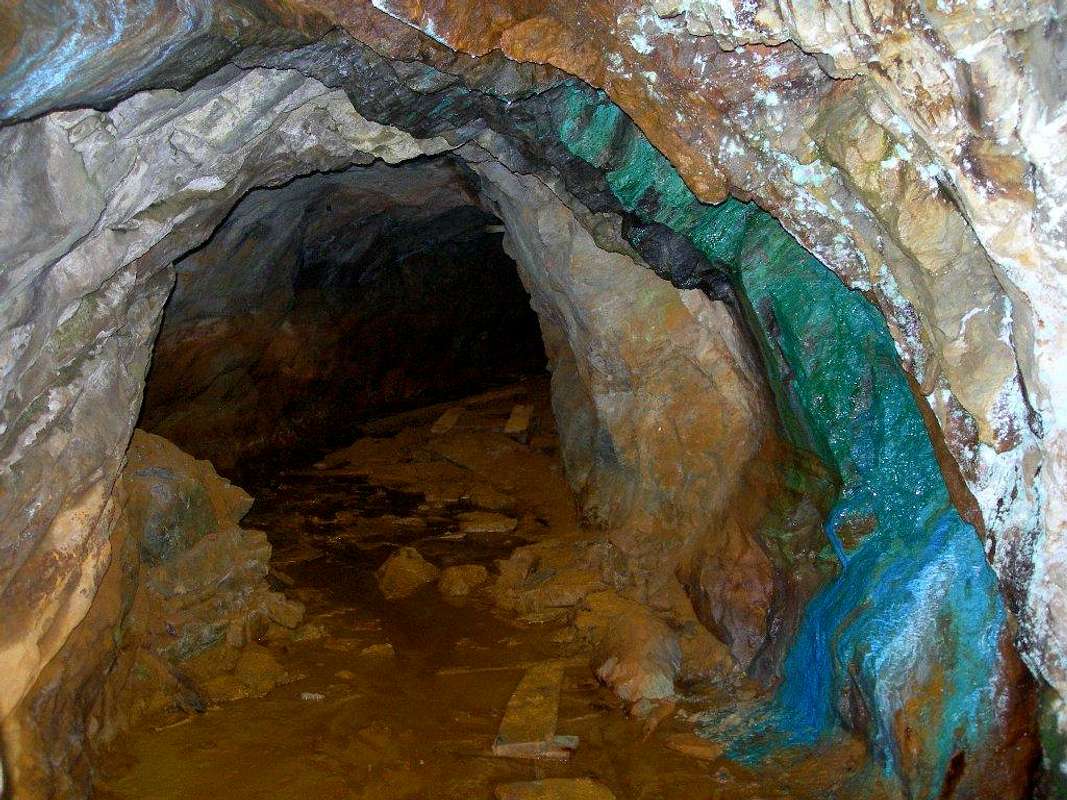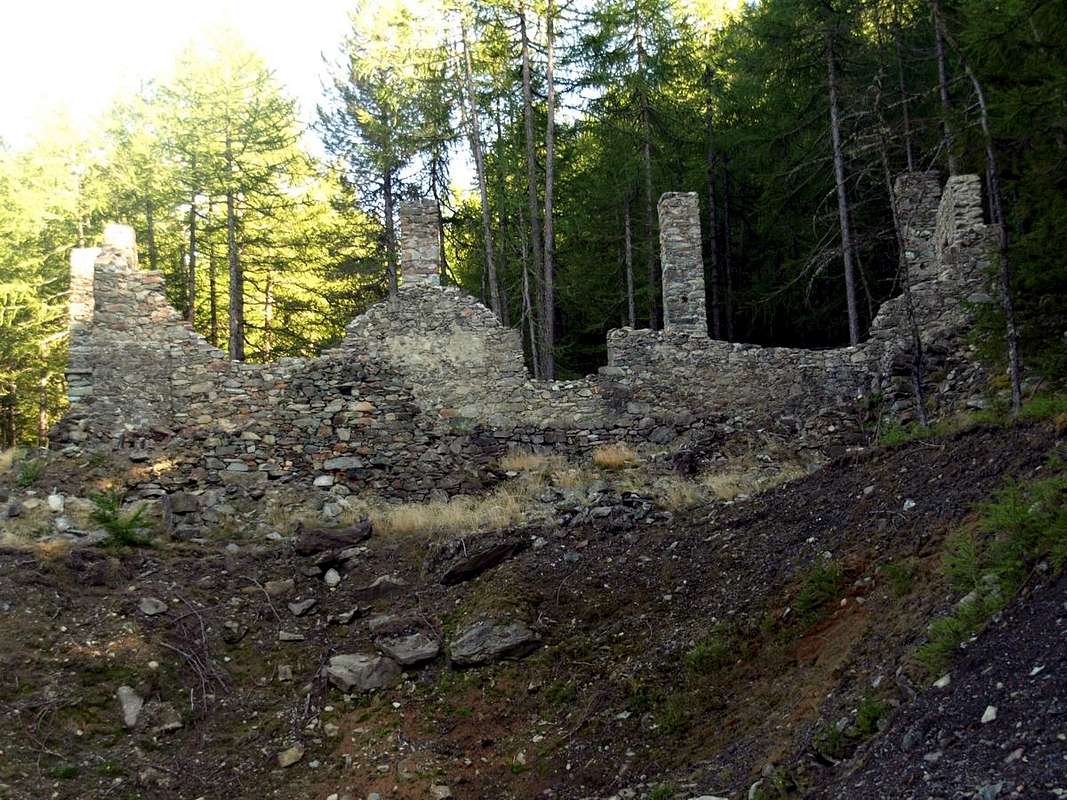Questa demarcazione dei confini tra Storia e Leggenda permane ancor insino ai giorni nostri. Ma pur se la logica suggerisce di ciò pensare, rimandiamo il discorso alla prima, ovvero storica, anche se, facendo un salto all'indietro nel tempo, non tutto risulta così semplice, facile e chiaro. Infatti mentre per quanto concerne le Miniere di rame di altre località come quella sita nel Comune d'Ollomont abbiamo una datazione di inizio sicura (1699), a seguito della scoperta effettuata dal Sig. Jean Antoine
Campier Rechoz, e successiva ben dettagliata cronologia degli eventi, per quanto riguarda quella di Servette, di gran lunga più antica, dobbiamo ricorrere agli Studi scientifici sulle scorie con datazione al radiocarbonio3. Questi adducono alla fine dello IX° Secolo gli inizi dell'estrazioni con relativa lavorazione del minerale e poi proseguiti con alterne vicende nei successivi fino al 1770/80, allorché la miniera venne prima abbandonata e successivamente ritrasformata rivolgendo la lavorazione non più alla calcopirite per produrre rame, bensì esclusivamente alla pirite utilizzata nella
"Fabbrica" a fondovalle, presso il ponte sulla Dora Baltea, e poi in quella di Verrès per produrre acido solforico e di conseguenza concimi per l’agricoltura. Similare il discorso per quanto concerne il minerale del ferro, dove lo sfruttamento nei filoni di
Cogne datano del 1432 con un primo forno costruito nei Villaggi di Crétaz ed Epinel ad opera di Monsignor Moriset, mentre il discorso é diverso per quanto concerne le esploitazioni anteriori nella vecchia
"Conia", donde Cogne per il conio effettuato sulle monete imperiali, oppure il più antico
"Coing" dei Salassi, che non significa conio bensì angolo. Forse determinando quell'angolo della valle dove il minerale, estratto nei filoni di
"Colonna, Costa del Pino, Larsinaz", prendeva la via del Piemonte tramite i Colli di Acque Rosse, Scaletta e dell'Arietta. Come testimoniano ancora le diciture di
"Côte Piemont" nel medio Vallone dell'Urtier, ma ancor più le antiche strade carraie delle quali sussiste chiara testimonianza. In altre località invece la datazione é certa, come per la Miniera di ferro di
"Prenayex" scoperta nel 1337 da Bernardo Maes in Val Ferret con successivo sfruttamento in Isvizzera nelle ferriere di Orsières. Mentre in altre località la datazione risulta altalenante con all'incirca l'anno 1000 per quella di
"Pacoulla" in Valle di Gressoney ed altre, sempre nella stessa valle, a
"Fornaset" presso Lillianes ed un'altra ancora al
"Reich" presso la Cappella di San Grato, con datazione certamente posteriore. Il ferro veniva estratto anche alla Testa di Comagna con relativo traporto a Châtillon, nella Valle di Saint Barthélemy in località
"Les Fabriques" e nell'adiacente Valpelline presso
Les Moulines" ed anche a
"Lechère". Oltrepassando la Dora Baltea ed avvicinandosi nel tempo e nello spazio al Vallone di St. Marcel, troviamo miniere di ferro al
"Mont Roux" in Valle di Champorcher (1697), di
"Valcoche" nella Frazione di Ourthy nel
"Vallone della Legna" e nella Valle di Champdepraz con le miniere di pirite e calcopirite a Crestaz ed Herin e quelle di ferro al Lago Gelato, situate al di sotto del Monte Iverta
(2939 m) ed internamente al
Parco Regionale del Monte Avìc. Ma quello che conforta le nostre supposizioni precedenti sono le notizie al riguardo delle miniere di amianto di
"Septarmes" nel Comune di Emarese sotto il Col di Joux, scoperta da Pantaléon Crétier nel 1872 ma già sfruttata dai Romani, come quella per l'estrazione dello oro al Mont Chétif o
"Mons Captivus" realizzata con schiavi o prigionieri oppure di galena argentifera del Mont de la Saxe detta come
"Trou des Romains". A conferma della tesi che vuole lo sfruttamento delle miniere di pirite, calcopirite a Servette sopra Les Druges in altitudine tra
1700/1820 metri e manganese, a
1900 metri, di Praborna ben antecedente a quanto affermino carte od archivi storici.
![]() Servette Coppermines with one of several entrances,
Servette Coppermines with one of several entrances,
by sergioenrico
This vallon that, by extension and amplitude, deserves to be considered in all respects a valley, it has a third mine or seam of ore called
"Vein Chuc" and positioned at a level just lower ie between
1300/1450 metres. This was discovered in a more recent time at the place called
"Chuc" (1418m) and closer to the Torrent de Saint Marcel. Unfortunately due to the short-sightedness of the new miners who sought only to higher profits, the extraction of the mineral happened so irrational, so that were shot down even the supporting pillars of that time, resulting already in the years 1770-80 initially with collapses and abandonment gradually reducing somewhat the ability of mining and quarrying in the same. Until 1780 the field was extracted exclusively chalcopyrite that was treated directly in the vicinity of the mine. In the twentieth Century the most important work took place at the line of Chuc with extraction of sulfur from pyrite, as well as the production of sulfuric acid, sulfates and fertilizers first descended to the
"Fabbrica" in the valley floor, near the bridge on Dora Baltea, and then transported by truck in the
"Factory Brambilla" in the nearby Verrès Commune for the final transformation. The works went on continuously until 1957, the year of the big flood in Aosta Valley, after which the three mines of iron, copper and manganese (Servette, Chuc and Praborna) were finally closed, leaving only a limited number of workers with the chief took care of reordering materials. In the following locations of
Fontillon (1653m)was extracted, already from the XI° Century and continued until the twentieth, a particular type of stone for the construction of the grindstones to the mills that produced flour; they were exported mainly in the zones of Ivrea, Vercelli, but that's another story and I tell it the next time going together to explore the vast Group of Mount Emilius and the adjacent Rouèses or Roizà ...
![]() Servette ancient iron & copper Furnace nearby Vargney Alp,
Servette ancient iron & copper Furnace nearby Vargney Alp,
by Osw
Questo vallone che, per lunga estensione ed ampiezza, merita d'esser considerato a tutti gli effetti una vera e propria valle, possiede una terza miniera chiamata
"Filone Chuc" e posizionata ad una quota appena più bassa cioé tra i
1300/1450 metri. Questa venne scoperta in tempo più recente presso la località detta
"Chuc" e più vicina al Torrent de Saint Marcel. Purtroppo a causa della scarsa lungimiranza dei nuovi minatori che puntavano esclusivamente a profitti maggiori, l’estrazione del minerale avvenne in modo irrazionale, cosicché vennero abbattuti anche i pilastri di sostegno delle volte, provocando già negli anni 1770-80 i primi crolli ed un abbandono progressivo delle miniere riducendosi alquanto la capacità estrattive nelle medesime. Fino al 1780 dal giacimento venne estratta esclusivamente calcopirite che era trattata direttamente nei pressi della miniera. Nel XX° Secolo i lavori più importanti ebbero luogo al filone di Chuc con estrazione dello zolfo dalla pirite, nonché alla produzione di acido solforico, solfati e fertilizzanti dapprima discesi alla
Fabbrica" in fondovalle e poi trasportati tramite autocarri nella
Fabbrica Brambilla" a Verrès per la definitiva trasformazione. I lavori proseguirono continuativamente sino al 1957, anno della grande alluvione in Val d'Aosta, dopodiché le tre miniere (Praborna, Servette e Chuc) furono definitivamente chiuse, restando soltanto un limitato numero di operai che, insieme al capo dei servizi, si preoccupò del riordino dei materiali. Nella sottostante località di
Fontillon (1653 m) si estraeva, già dall'XI° Secolo e continuata fino al XX°, un particolar tipo di pietra per la costruzione delle macine per i mulini che producevano farina; venivano esportate soprattutto nelle zone di Ivrea e Vercelli, ma questa é un'altra storia e ve la racconteremo la prossima volta andando insieme ad esplorare il vasto gruppo del Monte Emilius e l'adiacente delle Rouèses o Roizà ...
![]() Grande Roise (3357m) Mountain Chain, above Praborna Manganesemines (1900m) into the Monte Emilius Group (3559m),
Grande Roise (3357m) Mountain Chain, above Praborna Manganesemines (1900m) into the Monte Emilius Group (3559m),
by emilius
Comments
No comments posted yet.
